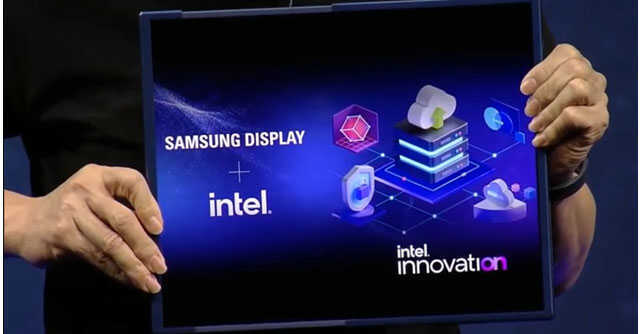
Intel, Samsung working on tablet PCs with sliding displays


Intel and Samsung are dabbling in new form factors such as sliding screens that can take advantage of the flexibility of OLED panels.
The two companies showcased a tablet PC at Intel Innovation event on Tuesday, where Intel also unveiled its 13th generation core processors ‘Raptor Lake’ for desktop PCs.
Unlike foldable screens which fold and unfold from the middle, Samsung’s slidable PC can expand from a 13-inch screen to offer a larger 17-inch screen.

The concept of expanding screens has been successfully implemented by LG in its rollable TVs, which also uses OLED panel that can curl back and forth into the TV stand. These TVs are also available in India.
“This shows one of the great examples of future of PCs. We implemented slidable technology rather than foldable. Foldable is gone.
We expect to see better user scenarios of PCs in the near future,” said JS Choi, chief executive of Samsung Display, who unveiled the device along with Intel’s chief executive Pat Gelsinger at the Innovation event.

Online images of the slidable screen shows ripples on the left side panel from where it’s sliding out. The issue of ripple on screen was even more prominent in early versions of Samsung’s foldable screen smartphones. It has been addressed to a large extent in newer models.
Several PC brands are experimenting with foldable screen in tablet PCs. Early this month, Lenovo announced a foldable tablet PC called ThinkPad X1 Fold, which can unfold to offer a 16.3-inch OLED touch screen. It runs on Intel’s 12th gen Core-i series processor with Windows 11 on top. It will be available in November at starting price of $2,499.
Samsung’s slidable PC is unlikely to hit stores anytime soon as both Intel and Samsung said nothing on its availability at the event.

